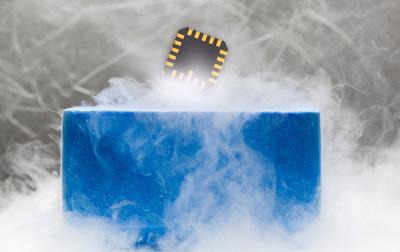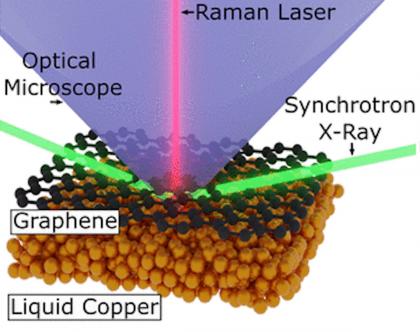The Graphene-Info weekly newsletter
Published: Tue, 06/08/21
Graphene to enable ten times higher data storage in computer memories
Researchers at Graphene Flagship partners the University of Cambridge, UK, Ecole Polytechnique Fédérale de Lausanne (EPFL), Switzerland, Empa-Swiss Federal Laboratories for Material Science and Technology, Switzerland and Graphene Flagship Associate Member the University of Exeter, UK, in collaboration with colleagues at CSIR-Advanced Materials and Processes Research Institute, India, National University of Singapore (NUS), A*STAR (Agency for Science, Technology and Research), Singapore, the University of Illinois and Argonne National Laboratory, US, have demonstrated that graphene can be used to produce ultra-high density hard disk drives (HDD). This can potentially lead to the development of ultrahigh density magnetic data storage: a big jump from the current one terabit per square inch (Tb/in2) to ten terabits over the same area.
HDDs contain two major components: platters and a head. Data are written on the platters using a magnetic head, which moves above the platters as they spin. The space between head and platter is continually decreasing to enable higher densities. Currently, carbon-based overcoats (COCs) – layers used to protect the platters from mechanical damages and corrosion – occupy a significant part of this spacing. The data density of HDDs has quadrupled since 1990, and the overcoats’ thickness was reduced from 12.5nm to about 3nm, which corresponds to one Tb/in2. However, a COCs’ thickness of less than one nm would be required to make a significant improvement in data storage and reach a density of 10 Tb/in2.
Paragraf introduces graphene Hall sensor optimized for cryogenic applications
Paragraf recently introduced the GHS-C Graphene Hall Sensor (GHS), providing a viable approach to measuring magnetic field strengths of 7 Tesla (T) and above, at temperature extremes below 3 Kelvin (K).

Graphene Hall sensor enables the accurate measurement of high magnetic field strengths at cryogenic temperatures, increasing manufacturing throughput by quicker magnet mapping, replacing existing NMR probe mapping stages. The cryogenic sensor also allows measurements directly in cold bore, removing the need for room temperature inserts giving quality data and time savings.
ZEN Graphene Solutions develops new graphene-based fuel additive
ZEN Graphene Solutions has announced that it has developed a stable diesel fuel additive, which increased the performance of diesel fuel by up to 10% in initial testing. Zen stated that these promising early results can be improved further through additional optimization work. ZEN has filed a provisional patent for this graphene-based fuel additive technology.
Greg Fenton, ZEN CEO commented: “Energy and fuel are crucial to global economic prosperity, but also represent our biggest challenge from an environmental standpoint. With global market estimates for diesel fuel alone near $1 trillion, the size of the challenge to reduce emissions from this level of demand is massive, but so is the opportunity for novel solutions to help us be more efficient in our usage. Global challenges of this magnitude require a number of solutions – and as a developer of nanotechnologies that help protect people and the environment – we are excited to contribute with technology that is easily delivered into fuels to improve efficiency and create value for our shareholders in the process.”
Korean fiber maker Huvis announces mass-production of graphene fibers
A leading Korean fiber producer called Huvis has reportedly begun to mass-produce graphene fibers.
The Company said that since graphene has such poor dispersibility, synthesis with PET (polyester) polymer is not considered easy. As a result, according to Huvis, most of the graphene fibers developed so far have either substandard graphene content, or the fiber is coated with a graphene material - which Huvis says makes them inferior (and is the reason that the graphene fibers available in the market are black or gray).
Researchers use HPC and experiment to refine graphene production
An international team of researchers, in an effort to produce cheap, defect-free graphene in larger quantities, have used GCS HPC resources to develop more efficient methods for producing graphene at an industrial scale.

Recent research indicates that using a liquid copper catalyst may be a fast, efficient way for producing graphene, but researchers only have a limited understanding of molecular interactions happening during these brief, chaotic moments that lead to graphene formation, meaning they cannot yet use the method to reliably produce flawless graphene sheets.




